Get in touch
555-555-5555
mymail@mailservice.com
MICHAEL HO
Finli Case Study
Payment Solutions for Small Businesses
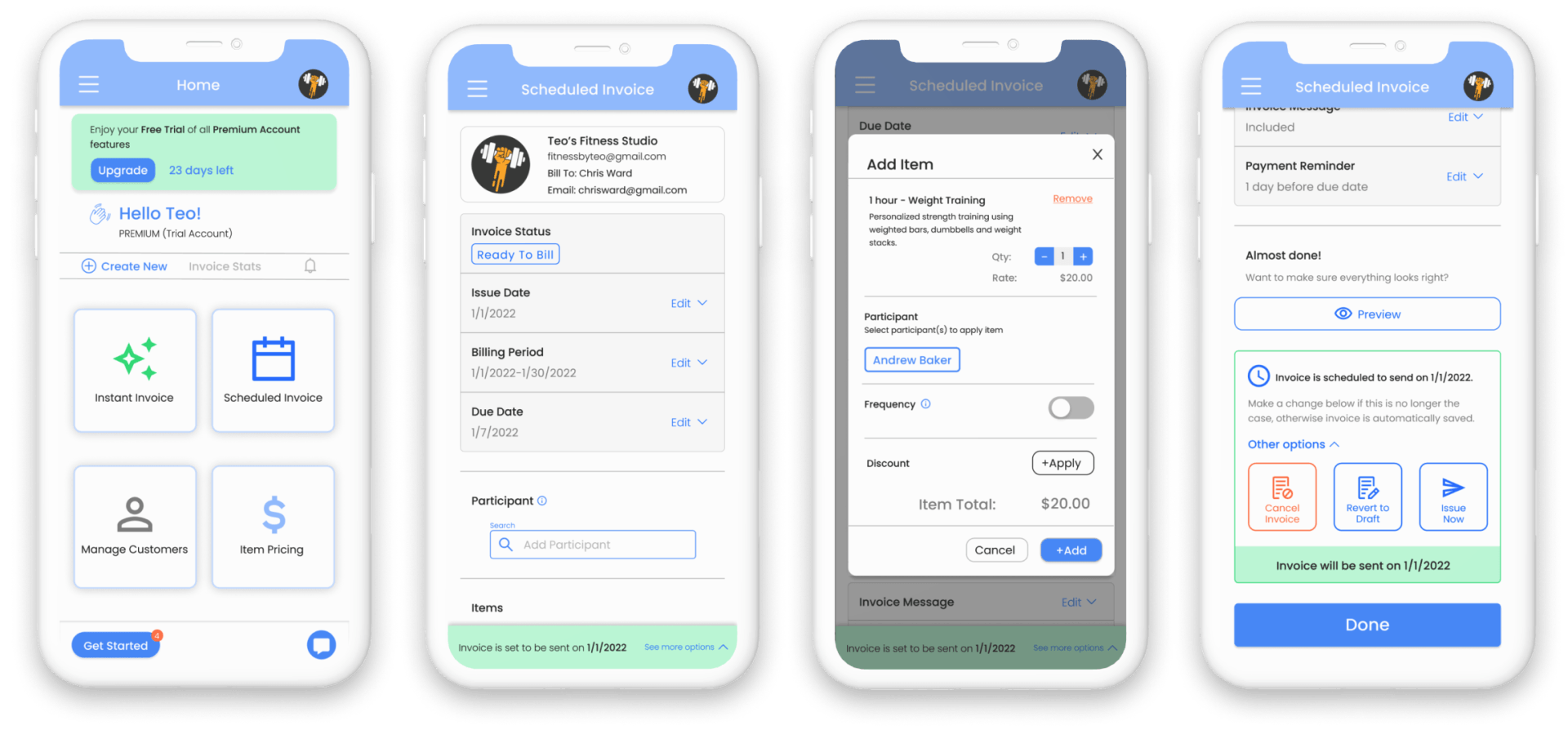
Overview
Finli helps thousands of small businesses with payment solutions that allow them to scale their business and focus on providing value to customers. The Los Angeles based startup's mission is to financially lift, hence the name Finli, small business in the community and by doing so empower the dreams of people who aspire to do more.
Finli came to us to looking for a user-centered solution that allows their customers to setup invoices through their mobile phones.
Duration
1 Month
Lead UX Designer
Role
Team
Responsibilities
Corinne Sawyers, Hein Tun, Michael Ho
User Research, UX Design, Visual Design
New The existing Smart Writing System solves a problem in itself, but another problem arises.
The Smart Writing System is based on a Smart Pen accompanied by a standalone mobile application. It allows users to have their physical notebook content available in digital format. The problem is that this limits users' content creation capabilities to a specific device, the Smart Pen. This is a commonality observed across Moleskine’s competitors.
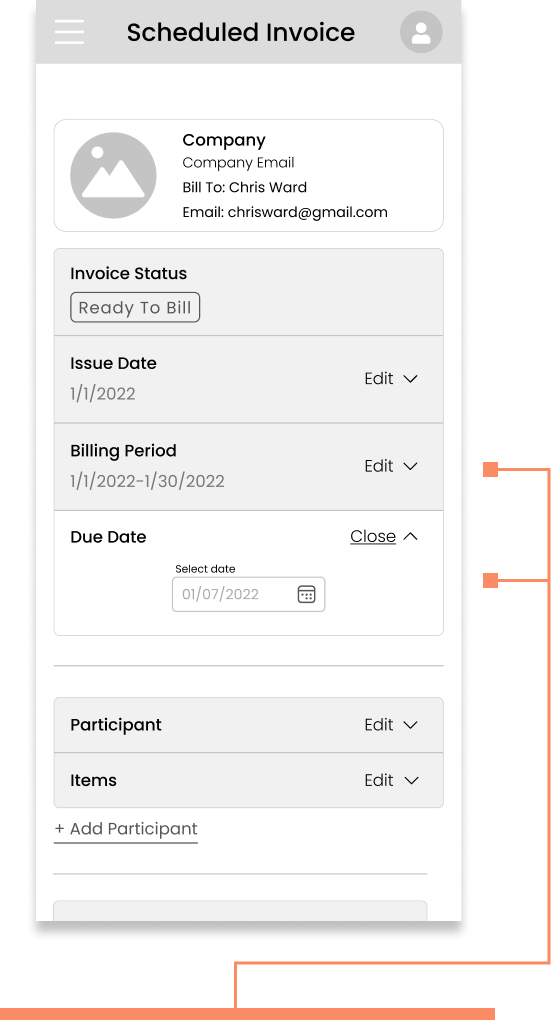
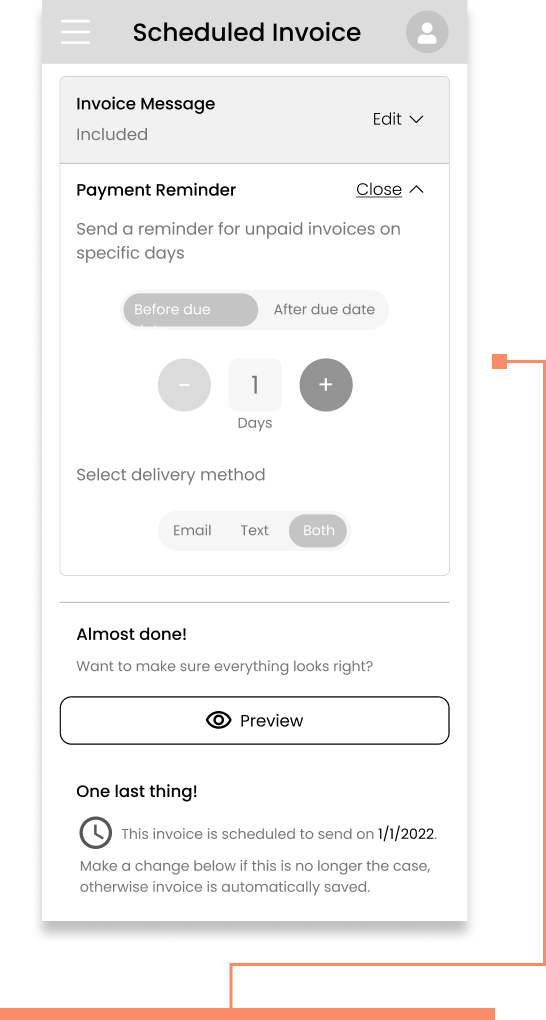
Our main research goal was to understand the use cases for an invoice scheduler. We learned from the Finli team that the small businesses they support typically run fitness studios, tutoring centers, boutiques and more.
We interviewed Finli's customers to understand their business, from their client base to the methods they use to receive payments.
We found that small business owners often:
- Have returning clients that purchase the same product (or service).
- Have trouble receiving payments on time.
- Need to customize invoices to fit with their business model.
- Prefer to use their mobile phone to manage administrative tasks as they are busy throughout the day engaging with clients.
We validated Finli's desire to offer a mobile invoice scheduling tool to small business owners. The user insights were synthesized to help define our user persona and problem statement.
Finli customers need a way to schedule invoices on-the-go so that they have time to engage with clients.
Problem Statement
Research
Before exploring our ideas, we identified the main challenges that need to be considered in our design process.
- Maintain consistency with existing Finli products
- Display all necessary invoice fields in a mobile screen
- Work within the constraints of existing backend frameworks
We explored different sketched concepts based on a user flow we developed. In the process we prioritized the persona's needs and kept usability heuristics in minds to guide our design decisions.
How might we help Finli customers schedule invoices from their mobile device?
Ideate
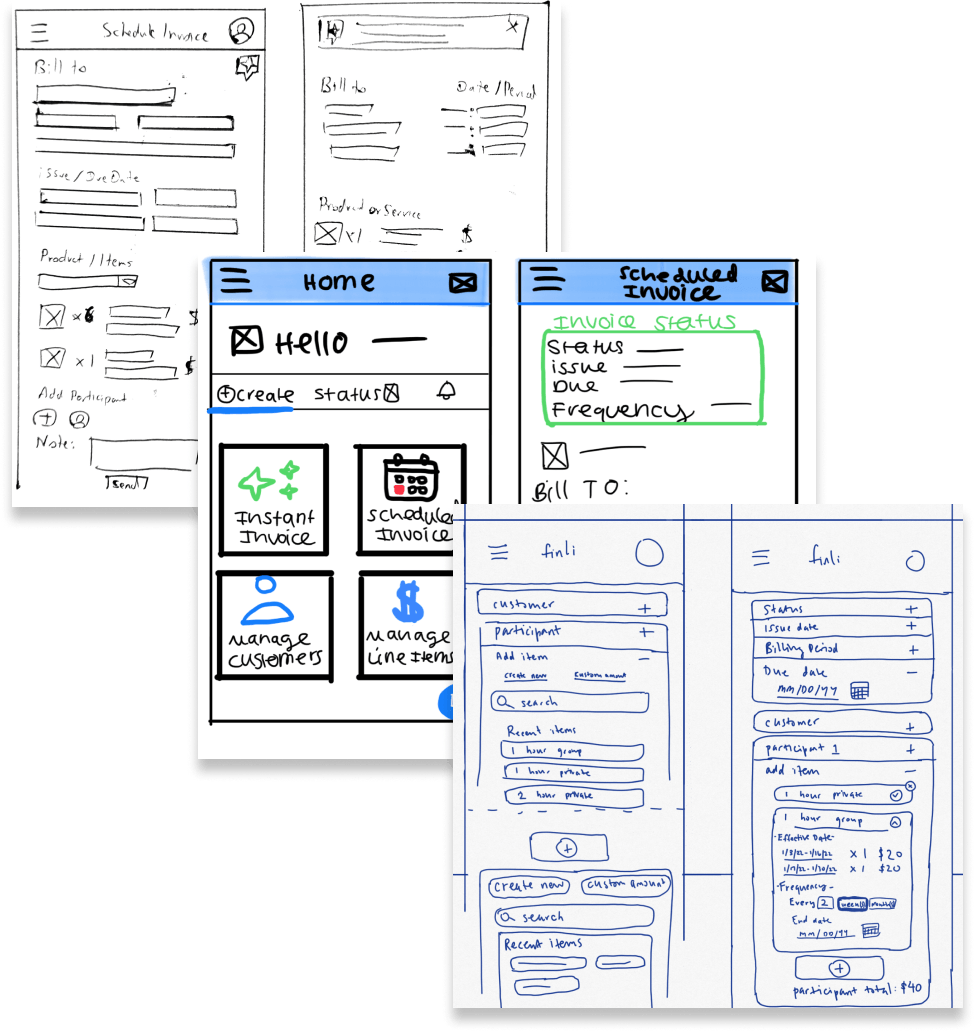
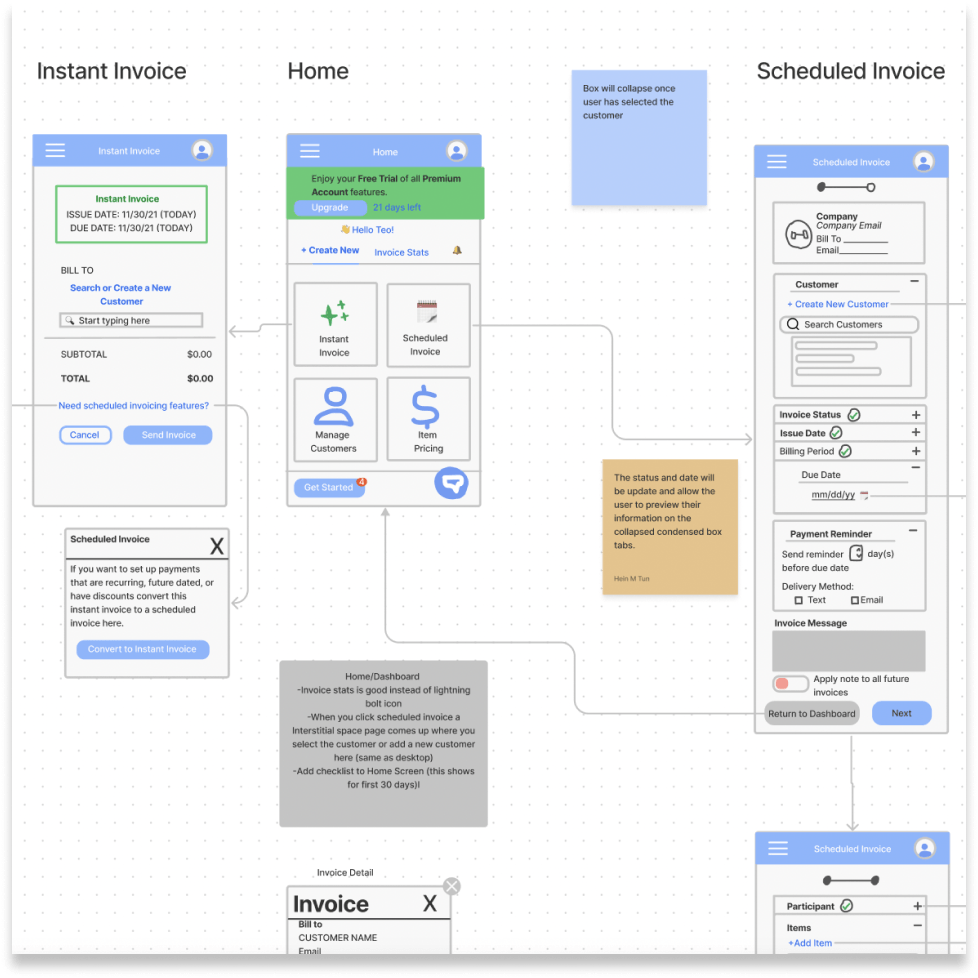
We met with Finli stakeholders to evaluate the feasibility of our initial concepts. They helped us identify the features and flows that are not compatible with the existing backend framework as we convert the concepts to mid-fidelity wireframes and prototype. Fields such as invoice status, issue date, billing period and due date are predetermined based on default user settings.
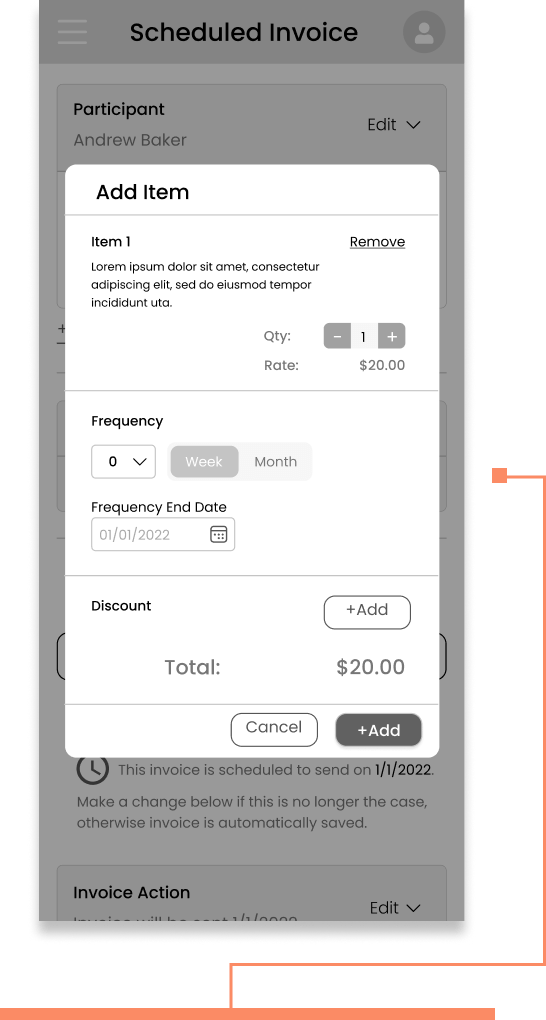

New payment reminder feature addresses the issue with receiving payments on time. Users choose how and when their customers are reminded to make a payment.
Customizable items cater to the needs of different businesses, from setting recurring frequency to applying discounts. Created items are saved for future use to speed up the invoice setup.
Styled accordion hides elements to avoid overwhelming users with information. Critical fields fit within a mobile screen without the need for extensive scrolling.

Through testing the mid-fidelity prototype, we sought validation of our assumptions and design decisions. Although all testers completed the task, we discovered issues that induced interaction friction.
Test results informed us that the initial structure was not the most intuitive and efficient way for users to add participants. 68% of testers attempted to add a participant by opening the Participant accordion first. We eliminated extra steps and established a direct path by fixing both participant and item functions to the page.
Testers found it difficult locating the section that changes an invoice action. We added a green border to increase visibility and displayed critical information on screen by default
The styling we applied to the high-fidelity wireframes is consistent with Finli’s branding and intends to offer a clean aesthetic without distracting the user in the process.
Difficulty with adding participants
Difficulty with changing invoice status
Prototype Testing: Reducing Interaction Friction
Maintaining brand consistency
Iterate
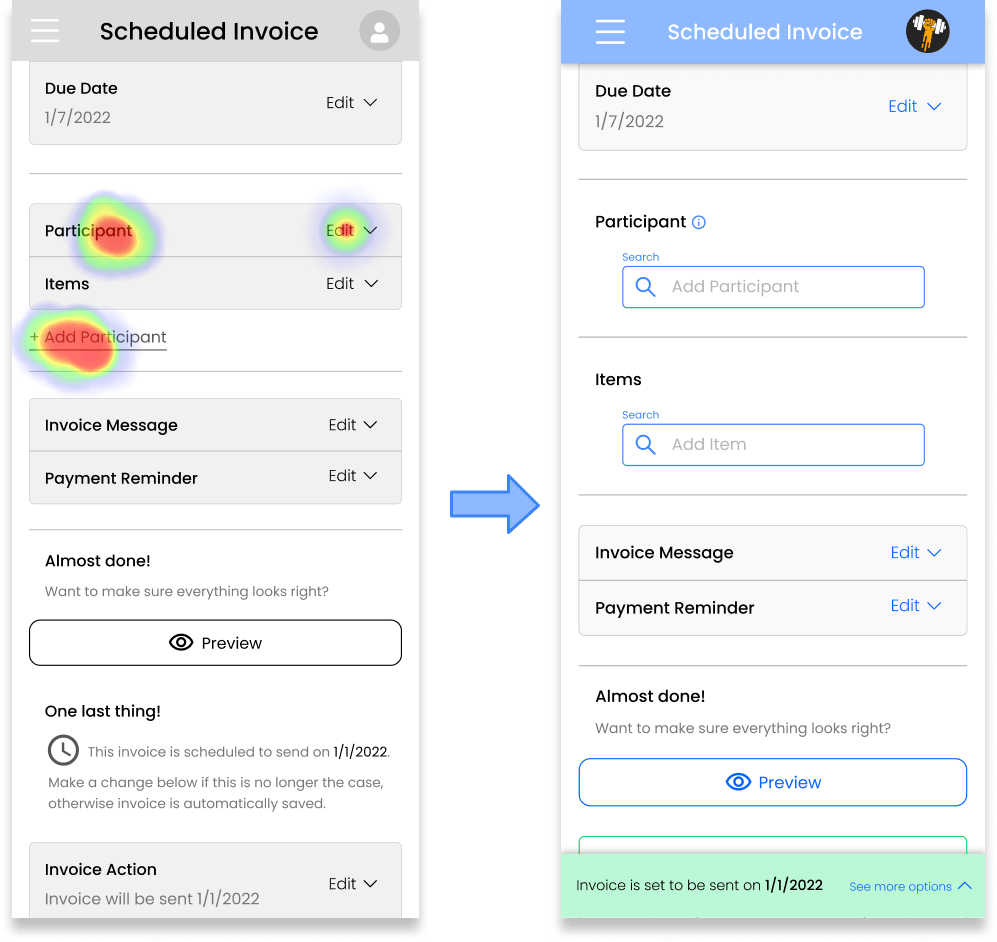

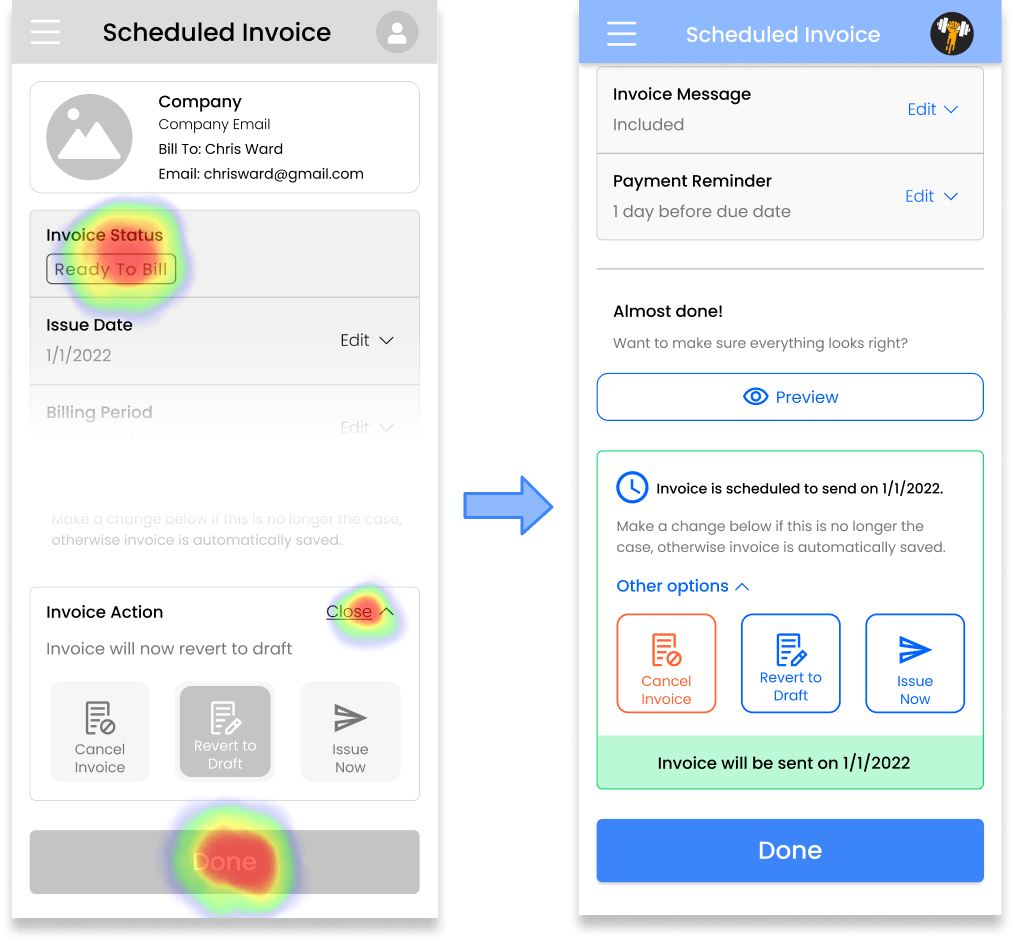

At the end of a month-long process, we presented our designs to Finli's leadership and product team over a thirty minute presentation.
We learned to adapt our presentation and accommodate for stakeholders, such as the Chief Operating Officer, who do not have a design background while effectively communicating our process, rationales and decision.
Finally, we handed off design assets to the product team to begin implementation.
Presenting to stakeholders
Delivery
As the invoice scheduling tool we designed intends to complement Finli's product offerings, we had to navigate within the constraints of the existing platform. In the process, we learned that consistent communication with key members on the client side and then collaboratively making a decision was crucial to addressing feasibility and compatibility of our designs.
The outcomes of testing helped validate assumptions and guide our iterations to improve usability. Similar to consistent communication with the stakeholders, testing should be conducted consistently throughout the design process to identify areas for iteration.
Takeaways
All Rights Reserved | Michael Ho
Privacy & Terms